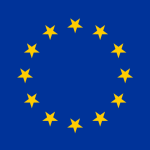Some crucial privacy questions about the use of neuroscience in criminal courts may be headed our way. And before the tryptophan hits, the Thanksgiving dinner table might be just the forum to gather the likely myriad perspectives on the matter. Are our brains due more privacy consideration than our bodies?
There have been large-scale efforts in the last five years to do to neuroscience what the Human Genome Project did to genetics – namely, to map the workings of the brain to such a level of specificity as to yield individualized insight about functioning, behavior, illness and treatment. The White House has the suitably branded BRAIN Initiative, and the NIH has the related Blueprint for Neuroscience Research. Indeed, foundations and universities across the country have designated increasingly large sums to neuroscience departments in an effort to shepherd the neurosciences into an age of individualized medicine and treatment. Then there is The MacArthur Foundation Research Network on Law and Neuroscience, a network of scholars that seeks to append the revelations of modern neuroscience to applications in the criminal justice system.
Neuroscience is currently in the courtroom in limited form. At the sentencing phase of death-penalty trials, defense lawyers sometimes present PET scans or fMRIs to accompany narrative mitigation testimony about a defendant’s legacy of trauma, cognitive development, or general criminal culpability. An arachnoid cyst may be cited as a correlate to impulsive homicide, and lawyers may make other attempts to show the causal origins of certain behaviors through functional neuroimaging.
Looking forward, the legal implications of modern neuroscience could be vast, as the opening chapter of Professor Owen Jones’ inaugural casebook on this topic suggests. Professor Daniels directs the MacArthur network. If neuroimaging gets to the point, as some scholars imagine it will, where it can lend empirical evidence to the deep subjective questions that permeate the law—assessments, for example, about knowledge, intent, implicit biases, and future dangerousness—then its role in legal adjudication could near ubiquity. The biggest hurdle neuroscience evidence currently faces is surviving a Frye or Daubert hearing, which requires scientific testimony to be reliable and methodologically sound in order to be admissible.
Neuroimaging, irrespective of its scientific gains, comes with a powder keg of privacy issues. One of the more immediate proposed uses for neuroimaging in criminal courts is to renew the downtrodden art of polygraphs and lie-detection. In 2008, a case in India garnered significant attention when a woman was convicted of poisoning her fiancé with arsenic. This finding was based, in part, on neuroimaging technology that purported to differentiate her memories of acts she committed from her recollection of events she had merely witnessed. She agreed, perhaps imprudently, to the neuroimaging procedures. But in 2010, the Supreme Court of India made clear that “forcibly subject[ing]” such tests upon defendants without their consent constitutes a violation of personal liberty
In California, companies like No Lie MRI and Cephos offer fMRI-based lie detection tests that they advertise as being reliable enough for court. But in the US, even willing defendants who seek to use such evidence to prove their innocence, have yet to successfully enter lie-detection neuroimaging into evidence. In 2012, Gary Smith was on trial for killing his friend and fellow soldier in Montgomery County, Maryland. With the help of Robert Huizenga, the founder of No Lie MRI (and perhaps better known as Dr. H on The Biggest Loser), Smith sought to submit to the court fMRI brain scans that purportedly displayed his innocence. It did not work. The court held that Smith’s proffered fMRI evidence was inadmissible because the tests were not sufficiently accepted by the scientific community.
The floodgates will likely hold for only so long. Whether neuroimaging is able to capture the indisputable truth, or the causal origins of criminal behavior, or the historical or developmental circumstances that precipitated a defendant’s presence in the criminal justice system, brain scans are coming to the courtroom. And so the question becomes, is our brain any different from our blood, our scars, and our hair follicles? Will we permit opposing counsel to seek images of our client’s brain as a routine matter of discovery? Or, as the Supreme Court of India decided in the context of lie detection, does the brain command greater protection to the point where we should limit admissible neuroimaging to cases with willing defendants? This question is likely contingent on just what sorts of information are revealed in a brain scan. But it is also likely that neuroimaging will again come knocking at the courtroom doors before we understand exactly what brain scans include. And so what do we do? Is the brain more private than the body? Ask the table.



